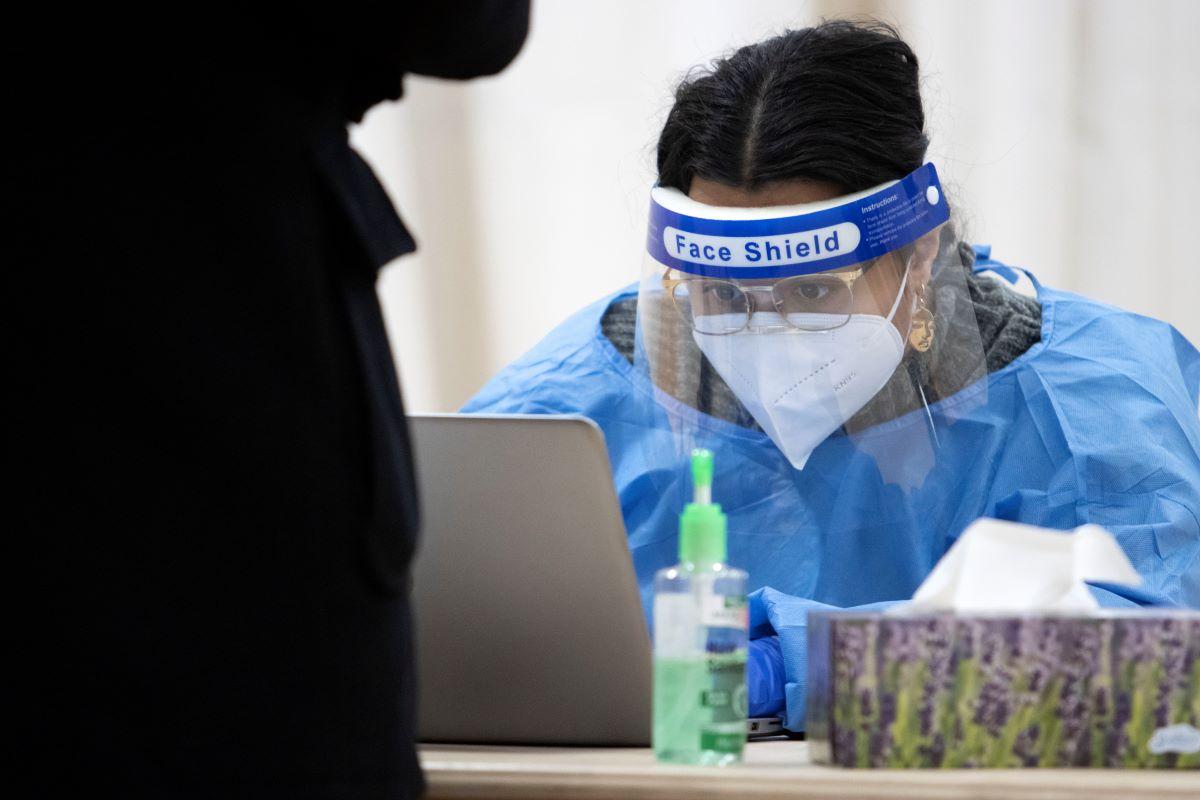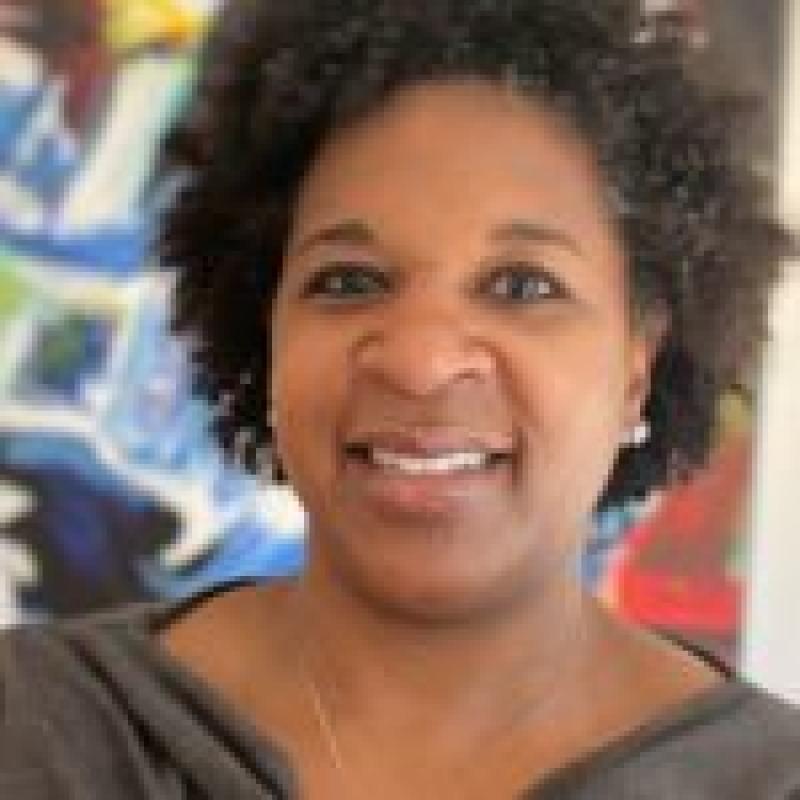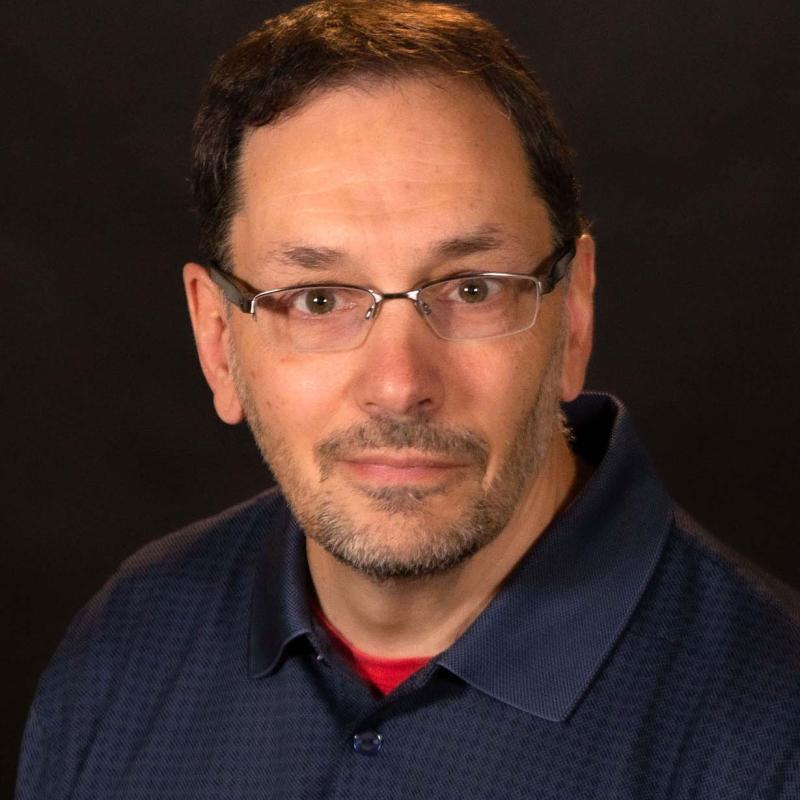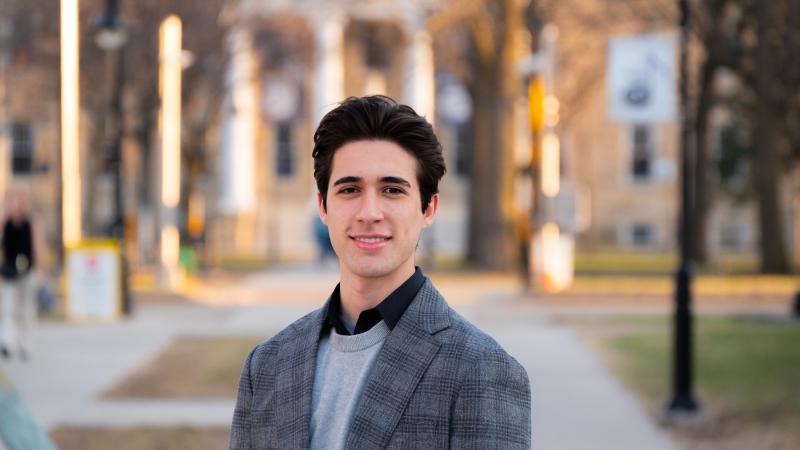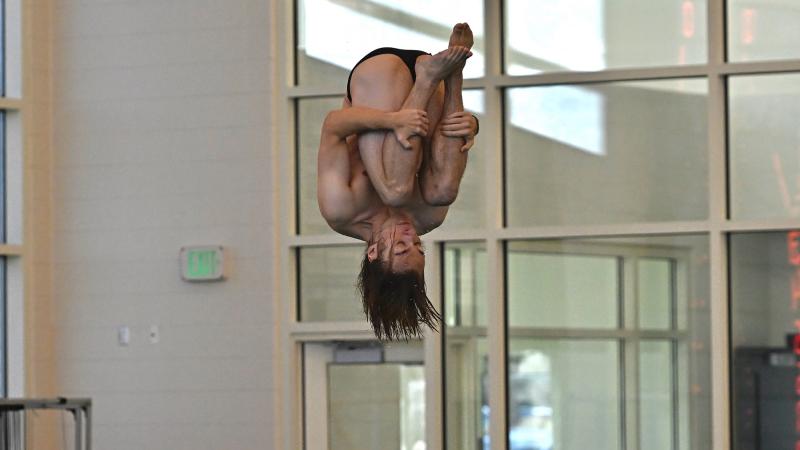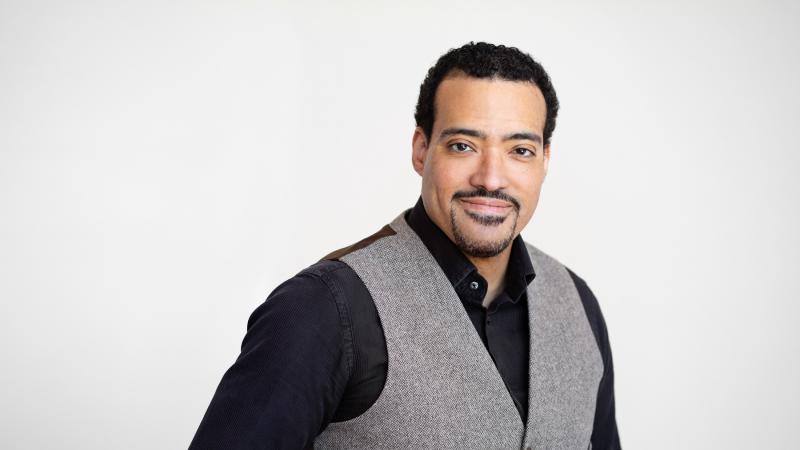Christyn Abaray knew she and her Lawrence University colleagues were walking a fine line when they welcomed 800 students back to campus in early September for the start of Fall Term.
After going fully remote during Spring Term, the Lawrence Pandemic Planning Team (LPPT)—a campus leadership group led by Abaray, assistant to the president—spent late spring and much of the summer sifting COVID-19 data, studying options, consulting with experts on and off campus, and eventually drafting a multi-layered strategy that would allow for a mix of in-person and remote study.
But as Fall Term neared, with roughly 60% of the school’s nearly 1,500 students opting to return to the Appleton campus, news reports were painting a bleak picture. Wisconsin was the No. 1 hot spot in the country for new COVID cases, with Appleton being one of eight Wisconsin cities making the New York Times’ top 10 list.
Christyn Abaray
Abaray watched those reports with understandable concern. LPPT members began fielding queries from concerned students and parents about how safe it was to return to Appleton.
But Abaray and her team stayed confident in the strategic plan they had put together, which included the initial testing of all students, faculty, and staff on campus, weekly random testing throughout the term, ample space for quarantining and isolation, and strict requirements to Honor the Pledge, including wearing a mask and adhering to physical distancing.
As the COVID test results came in through September and into October, the difference between what was happening in the Fox Valley—and, really, most of Wisconsin—and what was happening on the Lawrence campus could not have been more stark. While Appleton case numbers blew up, the campus emerged as arguably the safest place in the city.
“We were regularly just in awe of what the testing was showing,” Abaray said. “We were just blown away.”
Positive cases on campus through Fall Term stayed below 1% even while cases surged in the surrounding community. And while reports of bars and restaurants filling with unmasked patrons were frequent in the Fox Valley and across Wisconsin, Lawrence students overwhelmingly stayed true to the pledge they signed to follow safety protocols.
Campus buildings were closed to the public. Signage reminded all to wear masks anytime on campus. Students were asked to socialize mask-less only in their pods, with all other interactions requiring masks and distancing.
Now, midway through Winter Term, with six months of experience to lean on and protocols still in place, Lawrence continues to have success in limiting the spread of the virus on campus, with cases detailed weekly on its digital dashboard. There have been slight upticks, but nothing that has been sustained.
At its most problematic point during Fall Term, Lawrence counted 20 positive COVID cases among its students. That number fell back to two a few weeks later and never went above 10 the rest of the term.
In Winter Term, which began with the return to campus of about 900 students the first week of January, there was a quick increase, with 30 students testing positive and going into isolation during the week of Jan. 11. It was a potential tipping point, Abaray said, and the LPPT quickly communicated concerns, reminding the Lawrence community how precarious the situation was and how important it remained to adhere to safety protocols.
The message hit home. The feared spread never happened, with positive tests and needed isolation quickly dropping again into single figures. As of mid-February, there was one active student case.
Abaray and her team know this is not a victory lap. There remains a long way to go. New COVID variants spreading across the U.S. pose new threats, and losing focus on what got Lawrence to this point could send things south quickly. But they also know the strategy they adopted last summer works.
Testing, testing, testing

D’Andre Weaver ’21 (left) and Sterling Ambrosius ’22 wear protective gear as they work at the testing site. Fifteen students were hired to help staff the site each week.
Despite a hefty price tag, Lawrence committed to testing early and often and has stayed with it. The LPPT, which consulted frequently with Medical College of Wisconsin President and CEO Dr. John Raymond and ThedaCare President and CEO Dr. Imran Andrabi, identified testing as key to keeping the plan on track.
Everything else would fall in place based on what the testing numbers told them, Abaray said. If they could mitigate the spread of the virus, then they could launch academic programs as envisioned in various modalities and they could take steps to make the student experience as robust as possible despite the obvious limitations that come with safety protocols.
“The big piece of making all that happen was testing,” Abaray said.
Every student and employee who planned to set foot on campus at any point during the term was required to be tested before the term began. After that initial round, at least one-third of the campus population was tested weekly.
During Fall Term, that meant nasal swabs administered by Bellin Health. For Winter Term, the LPPT opted to switch to saliva-based PCR tests that could be administered by Lawrence staff in partnership with Concentric.
“This allows us to be much more efficient and able to scale our staffing patterns to match the testing numbers for the given week,” said Richard Jazdzewski, dean of Wellness Services and an LPPT member. “This has resulted in less time waiting in line on site for our LU community.”
Richard Jazdzewski
It’s also allowed Lawrence students to work as part of the testing team. Meralis Alvarez-Morales ’22 jumped at the chance to don protective gear and go to work. She’s now working between four and five hours a week, gathering needed information on site from Lawrentians being tested.
“I choose to work as a testing assistant not only because of the opportunity to be paid, but also because I wanted to do my part in giving back to my community,” Alvarez-Morales said. “We are still in a global pandemic after all, and many hands do make light work.”
The testing, which is set up in the Buchanan-Kiewit Wellness Center gymnasium, will continue in Spring Term, Abaray said. The cooperation to date from students and employees has been stellar. The push to stay the course will continue even as COVID numbers in the surrounding community continue to go down and a growing number of people are being vaccinated.
“The only way our testing strategy works is because we have a group of students, faculty, and staff who are adhering to all it means to be in the Pledge,” Abaray said. “It’s an interwoven group of things that all have to be happening for us to be where we are right now. Holding each other accountable is a big piece to that.”
The Pledge

Wearing a mask on campus is part of Honor the Pledge.
Honor the Pledge, launched before Fall Term began, is a pact between the University and all students, faculty, and staff who opted to or needed to be on campus. It lays out 10 promises tied to safety protocols, from mask-wearing to social distancing to testing.
Violations of the Pledge have been addressed on an individual basis, Abaray said. And while there have been occasional violations among students, the vast majority of Lawrentians on campus have stayed true to the Pledge. That, more than any other factor, is why Lawrence has had success mitigating the spread while some universities across the country have struggled.
“Student adherence to what we’re asking them to do, for the most part, is what’s making this possible,” Abaray said. “We’ve all read the stories from other places where decisions that students make really do make or break what happens. We have students who get it. They’re making some of the most mature decisions that we could ask for.”
Being a small campus certainly helps. Abaray and the rest of the LPPT know it’s easier to get that buy-in from a student body of 1,500 than it is for a campus with 50,000 students. But it’s still impressive. And the work continues.
A new incentive program launched through Wellness Services, called #VIKINGSCARE, gives Lawrence community members an opportunity to recognize their peers for behavior that keeps the campus community safe.
“Students who have been nominated can win weekly prizes, including free dinner with five friends from a local restaurant, an Apple watch, a Bluetooth speaker, LU gear, and more,” Jazdzewski said.
Alvarez-Morales, a Global Studies and Spanish double major, speaks with pride about her fellow students. She said students’ willingness to adhere to the Pledge, as limiting as it is, is what has separated Lawrence’s success in mitigating virus spread from what’s happened off campus.
“Lawrence overall has done a great job enforcing safety protocols and guidelines on campus,” Alvarez-Morales said. “Lawrence has also done a great job of providing students with the resources to obtain masks, reusable dinner bags, food, and sanitizing products to clean their spaces.”
The vast majority of students have taken the virus seriously. They understand that masking up and following protocols are selfless acts aimed at keeping others safe and the campus functioning. Alvarez-Morales said she wishes that was the case everywhere.
“In short, yes, I feel safer on campus now than I did when I first thought of returning to campus. But I do not feel safe in the surrounding community.”
Isolation and Quarantine Space

Kohler Hall was set aside as isolation and quarantine space as part of the strategic plan to mitigate virus spread on campus.
Lawrence limited the number of students who could live on campus – roughly 800 opted in for Fall Term and about 900 for Winter Term – so adequate housing space could be dedicated to isolation and quarantine.
Kohler Hall has been that space, with students being moved into the hall for isolation if they test positive and for quarantine if they have had close contact with someone who tested positive.
Linda Morgan-Clement, the Julie Esch Hurvis Dean of Spiritual and Religious Life and chaplain to the University, Terra Winston, associate dean of Spiritual and Religious Life, and Curt Lauderdale, dean of students, have been instrumental in creating a responsive and caring space for students entering Kohler. Bon Appetit, Lawrence’s on-site provider of campus meals, has been essential in providing food delivery.
Abaray praised Morgan-Clement and Winston for their ability to provide comfort—physical and emotional—for students going through isolation or quarantine. And she called Bon Appetit employees unsung heroes for their willingness to adapt in ways that serve those students.
“Their planning and their ability to adjust their planning for our students who are in Kohler in quarantine or isolation has been phenomenal to watch,” Abaray said. “We had a plan going in, and that wasn’t providing the best experience for the students, so they pivoted. It illustrates how much adjusting you need to do. It’s OK to adjust. You don’t have to have all the answers on the front end. You won’t. Adjusting is part of that.”
The making of the LPPT
Leadership and communication via the LPPT have been critical from the beginning. The group includes President Mark Burstein and most of his cabinet, as well as key personnel from Wellness Services, the faculty, and other points across campus. In all, more than 50 voices have been part of that team, including a number of student leaders.
“We figured out very quickly that we needed to have a lot of stakeholders around the table if we were going to do this the right way,” Abaray said.
The group met twice weekly through the spring and summer as it drafted a strategy to, if at all possible, bring students back to campus. It split into five subgroups to explore in detail various aspects of that challenge—a group focused on the campus calendar and curricular issues; a co-curricular group focused on student life, housing, meals, and student engagement; a group focused on visitors to campus; a health group that included faculty members with expertise in the biomedical field; and an employee group that explored potential workplace issues.
Those subgroups met regularly, then reported back to the LPPT as the strategy slowly evolved.
“All of it needed to come together by the middle of summer to have an idea of what direction we wanted to go for the fall,” Abaray said. “That was the first big decision that needed to be made.”
Once the decision was made to proceed with at least a portion of the student body on campus, the LPPT went to work drafting particulars, communicating the plan in detail to students, families, faculty, and staff, and answering an onslaught of questions.
That work is ongoing, with the LPPT continuing to meet weekly.
“We feel somewhat comfortable with where we are,” Abaray said.
But as it was nearly a year ago when the pandemic first arrived, there are more questions than answers. LPPT members know they must continue to listen, learn, respond, and adjust.
“Everything changes by the day,” Abaray said. “It’s that level of living in the gray. I don’t know how many times I’ve said that to people. You hear, ‘You all said this on this day and now you’re saying this.’ Yes, we did. We learned something. It’s not that we were wrong. It’s that we’ve learned something, and that’s moving us forward. We are making decisions with the best information we have at that particular moment, and the moment we have more information we are going to adjust. I know that’s not comfortable and it’s not ideal. For the control freak in me, it’s unnerving. But you have to be able to be in that space right now if you’re going to be productive.”
What’s next?
Vaccines are on the horizon. Jazdzewski said Lawrence will continue to work with city and county health officials in efforts to distribute and administer COVID-19 vaccines on campus, but how and when has yet to be determined.
In the meantime, preparations are under way to launch a Spring Term that will look very much like Winter Term. Students are again being given the option of living on campus or staying remote. If living on or visiting campus, adherence to the Pledge will remain a must. Adjustments in protocols will be made as conditions dictate.
Confidence in the strategy that has gotten Lawrence to this point is strong, Abaray said. But she and others on the LPPT know there will be more hurdles and more questions as winter turns to spring and impatience grows. The finish line remains murky at best.
“Every day we doubt everything because we just don’t know,” Abaray said. “We still don’t know what’s going on with this virus; still don’t know a lot of things. But I trust and I have confidence in our protocols and our strategy.”
